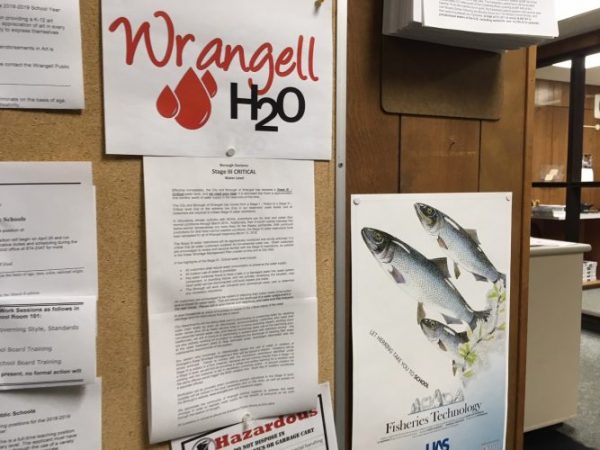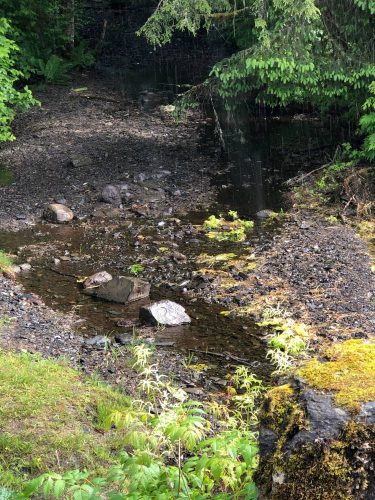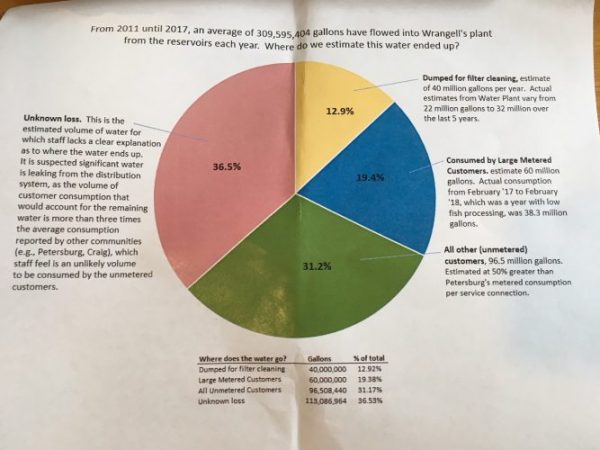
Believe it or not, one of the worst droughts in the nation is in Southeast Alaska. That’s according to federal meteorologists. Ground zero for the drought is Wrangell, a city that’s struggled for years to keep up with summer water demand.
Wrangell recently issued a low level water watch. Residents are asked to cut back water usage where they can. It’s something Wrangell’s locals are used to.
“We got some rain yesterday, as long as we get a little bit everyday, I’m not too concerned about it,” said Wrangell resident Dawn Welch. “Everyone just needs to do their part.”
For years, Wrangell has struggled meet peak demand for water in the summer. That has nothing to do with weather: it’s all about aging infrastructure. The city’s slow-sand filtration plant is — well — slow. It hasn’t treated water fast enough to meet the extra demand from the town’s seafood processors and other summer users.
Things were so bad in 2016, that the city declared a water emergency.
But a drought in a rainforest? That’s another factor that’s piling on a city that’s long had water woes.
The National Weather Service says Southeast’s drought is – right now – the worst in the nation. Other places may have received less rainfall, but Aaron Jacobs, a hydrologist with the National Weather Service in Juneau, points to the actual difference of precipitation. Since September 2017, nearby Ketchikan received 60 inches less precipitation than usual. Jacobs also points to the droughts ecological and economic impacts, most notably to the regions hydropower supply.
“To me living in a temperate rainforest, that’s pretty exceptional,” Jacobs said. “We haven’t seen that in the 20 years since the Drought Monitor began.”
The three-month forecast gives little clarity for the summer months. There are equal chances that the region will get more, less or an average amount of rainfall.

But June is always a dryer month already.
Wrangell’s water supply comes from two reservoirs. Levels are healthy right now, even overflowing. But the flume that feeds water into them is already dry.
“The stream that feeds our reservoirs is really just a little bit more than a trickle,” Wrangell’s city manager, Lisa Von Bargen, said.
She’s expecting warmer, dryer weather. Plus, 50 percent less snowpack than last year.
Wrangell has stopped selling water to visiting cruise ships. That’s not a big loss – maybe a few hundreds of dollars per ship. But large water users that the city doesn’t want to disappoint are the town’s two seafood processors.
During the 2016 water emergency, the city partially restricted water usage to the Trident and Sealevel plants.
Plant managers have since said they conserve more — for example they use more salty seawater where they can. And they recycle more fresh water.
The two processors didn’t respond to requests for comment. But both are expecting a good season for Dungeness crab and chum salmon. And that’s going to require plenty of freshwater.
Von Bargen does not want to disappoint them: they’re big taxpayers — in both property tax and raw fish tax.
“That doesn’t take into consideration all the economic benefit that is going to the private sector,” she said.
For now it’s wait-and-see at Wrangell’s city hall.
“If we need to increase the water watch because we see water levels become more concerning, we will not hesitate to do that,” Von Bargen said. “And we ask the community to hang in there with us.”

For now, the city is working on its infrastructure and processing. Fixing leaks and recapturing water disposed of during filtration process. The city had been losing up to half of its treated water due to leaks and cleaning, and it’s gradually closing the gap. The city is also sourcing from a well, which could provide up to 30,000 gallons of non-potable water as needed for road work. The city approved the purchase of a $9 million water plant over a year ago. But work hasn’t begun as the funding isn’t yet in place.
In the meantime, a town hall meeting is scheduled next week to talk conservation. Residents will be able to ask questions – and get answers on June 12.




